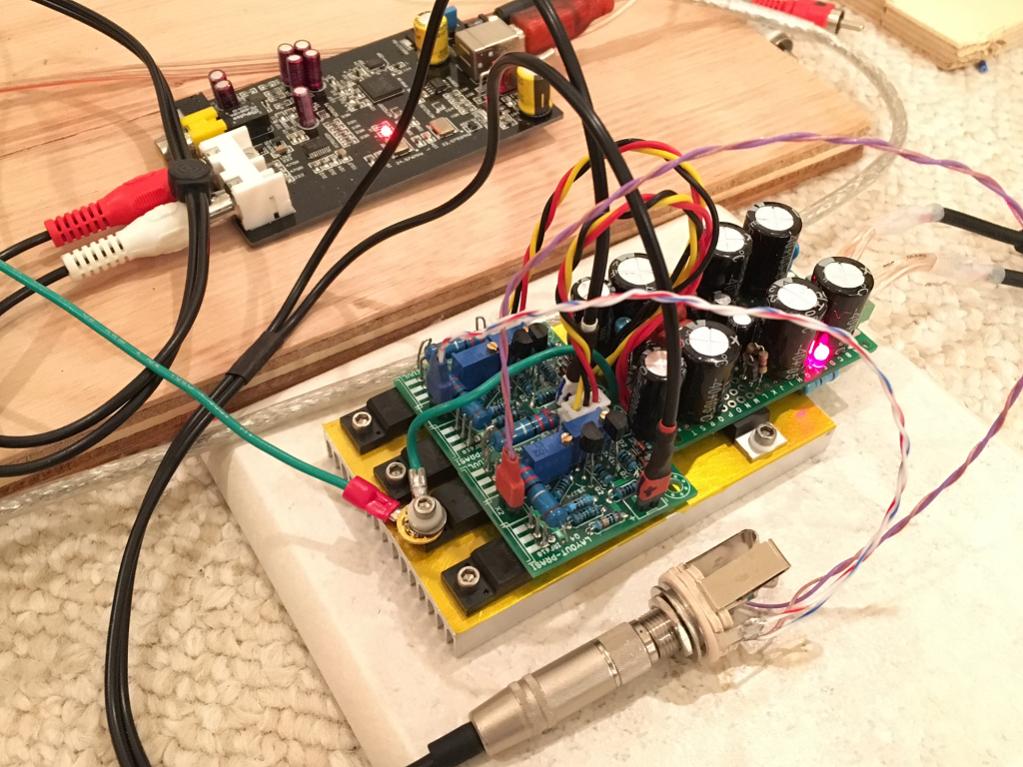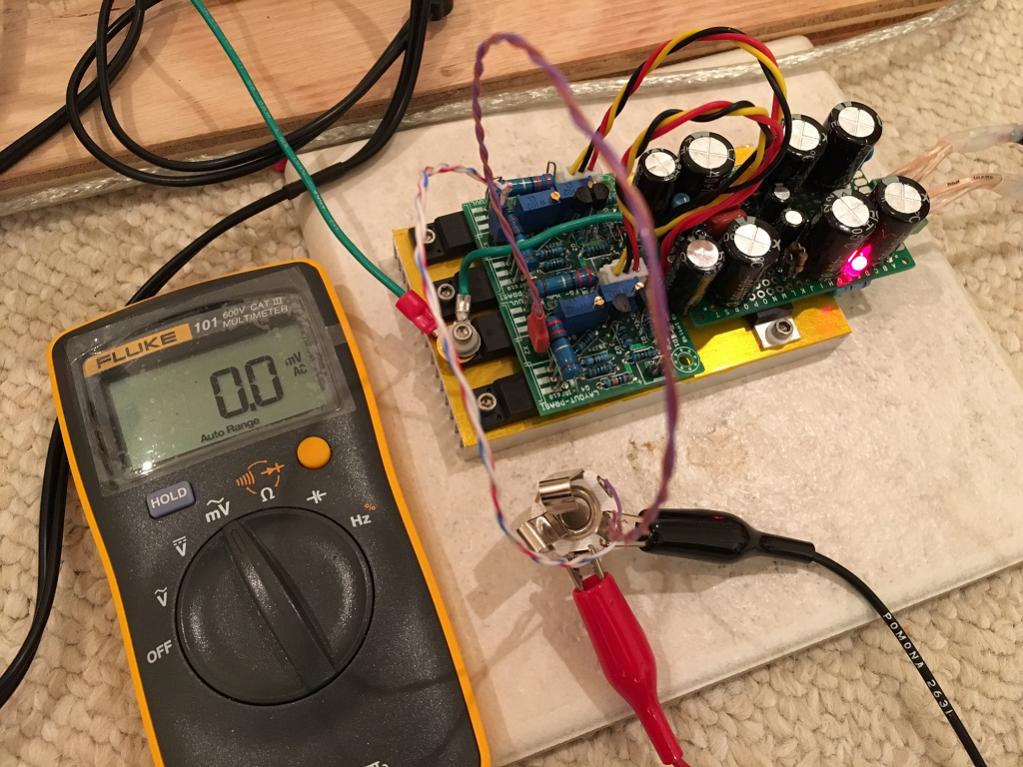Same as before, combined SMT/THT footprint, SMT pinout gate in the middle, THT pinout any (triangle footprint).Very nice sikahr! 50mm for stereo board is good. What JFET are these?
S&D presumed interchangable.
> Kind of defies building high quality devices somehow....
Remind me of the little Afghan boy who made his own Lionel Messi jersy from plastic bag.
But then at least he (his family) made it himelf with what he had access to.
Unlike those others who knowingly make fakes to sell, and also those who willingly support forgery by buying.
Patrick
.
Remind me of the little Afghan boy who made his own Lionel Messi jersy from plastic bag.
But then at least he (his family) made it himelf with what he had access to.
Unlike those others who knowingly make fakes to sell, and also those who willingly support forgery by buying.
Patrick
.
Attachments
So, essentially we are building high quality class A NP inspired DC coupled stuff with cheap budget substandard parts hoping that we're luckyKind of defies building high quality devices somehow....maybe a DC protection/muting circuit is not such a bad idea.
I have binned 500 piece boxes with excellent caps because of shelf life. Go figure....
I have nice FM, FC, Oscon Panasonic caps from Digikey. I save them for my final reference projects. I build a lot of amps - mainly as prototypes or experiments. So it helps to keep costs down. No harm done if something let's loose. Although it hasn't happened yet from a bad cap. I do measure (a random sample of maybe 8 of them for cap value and ESR with an LCR meter.
The whole notion that audio can't sound good with cheap components is totally false. I have proven this with speakers using $10 drivers and now many of my amps seem to work well with budget parts.
I was victim of the huge leaky oozing capacitor debacle Dell had with their motherboards from a major manufacturer using a bad (stolen) electrolyte recipe. So going major brand doesn't ensure it's going to be good.
The whole notion that audio can't sound good with cheap components is totally false.
Agreed, I haven't said otherwise. Substandard is different from affordable industrial quality. I see blown/bulged caps more than I like and therefore I am very weary of unknown ultra cheap brands as those is which I need to replace too often.
I was victim of the huge leaky oozing capacitor debacle Dell had with their motherboards from a major manufacturer using a bad (stolen) electrolyte recipe. So going major brand doesn't ensure it's going to be good.
Me too, changed many many motherboards of Dell GX170 if I remember correctly. Was not because of a stolen formula as it were Nichicon caps. The electrolyte was impure or contaminated but I forgot what is was exactly. It was not the "capacitor plague".
Still buying from large reputable brands that produce industrial quality is a safer bet than buying ChongX.
Last edited:
2SK2013 and 2SJ313 & Cap Multiplier Sounds Fantastic
I converted the power supply to a CRC upstream of the cap multiplier by adding a 4.7R and then added another 2200uF on the output cap after the multiplier. I added an earth ground and ground from star hub to heatsink. The hum is gone and the amp is dead silent with a cheap pair of 19v SMPS. So we can now move the main bricks outboard of the amp box and use standard 5.5mm round power supply jacks. I used the Fluke to measure the AC mV and got 0.0mV. With my good headphones attached and no input, the amp is dead silent.
I have played a few of my favorite test tracks and so far it sounds exceedingly good with 165mA bias current. This is now a very compact and portable amp if placed in a smaller chassis. Chassis cover can still serve as heatsink to dissipate heat without needing real fins I think.
The sound of the 2SK2013/2SJ313 vs the IRF610/9610 sounds like perhaps more detail, and more crisp bass. All subjective thoughts of course. But overall, a great sounding headphone amp.
Here is the amp under test with the XMOS U8 & Burr Brown PCM5102A DAC as source. These two units could probably be combined in one box for a DAC and HA in one even.

Here is the noise measurement:

I converted the power supply to a CRC upstream of the cap multiplier by adding a 4.7R and then added another 2200uF on the output cap after the multiplier. I added an earth ground and ground from star hub to heatsink. The hum is gone and the amp is dead silent with a cheap pair of 19v SMPS. So we can now move the main bricks outboard of the amp box and use standard 5.5mm round power supply jacks. I used the Fluke to measure the AC mV and got 0.0mV. With my good headphones attached and no input, the amp is dead silent.
I have played a few of my favorite test tracks and so far it sounds exceedingly good with 165mA bias current. This is now a very compact and portable amp if placed in a smaller chassis. Chassis cover can still serve as heatsink to dissipate heat without needing real fins I think.
The sound of the 2SK2013/2SJ313 vs the IRF610/9610 sounds like perhaps more detail, and more crisp bass. All subjective thoughts of course. But overall, a great sounding headphone amp.
Here is the amp under test with the XMOS U8 & Burr Brown PCM5102A DAC as source. These two units could probably be combined in one box for a DAC and HA in one even.

Here is the noise measurement:

Attachments
Last edited:
It seems that with two of these portable rechargeable battery packs, you could run this HA for a long time not connected to any wall plug. Rated at 50,000 mAhr, at 200mA per channel or 400mA total would be 125hrs? Well you don't want to drain it fully so let's say 50% so 63hrs is still a long time. Did I get this right?
https://www.amazon.com/MAXOAK-50000mAh-Portable-External-Notebook-Most/dp/B00YP823NA/
https://www.amazon.com/MAXOAK-50000mAh-Portable-External-Notebook-Most/dp/B00YP823NA/
50000mAhrs equals 50Ahr.
That's a mighty big battery pack. Similar to that used to start a big automobile. Except they cheat.
It's 50Ahr @ 3.7Vdc.
After it converts to the required voltage the effective Ahrs will be Input voltage/Output voltage*efficiency
eg.
Start with 3.7Vdc and increase to 12V @ an efficiancy of 95%, you get an effective ampere hours of 50*3.7/12*0.95 = 14.6Ahr
Still a lot of hours of operation from an SMPS.
That's a mighty big battery pack. Similar to that used to start a big automobile. Except they cheat.
It's 50Ahr @ 3.7Vdc.
After it converts to the required voltage the effective Ahrs will be Input voltage/Output voltage*efficiency
eg.
Start with 3.7Vdc and increase to 12V @ an efficiancy of 95%, you get an effective ampere hours of 50*3.7/12*0.95 = 14.6Ahr
Still a lot of hours of operation from an SMPS.
Last edited:
It would seem that two of these SMPS DC-DC converters in series with center tap could give me +/-19v regulated and adjustable dual rails perfectly capable of providing 200mA. With the cap multiplier to clean up the mess, I could get a pretty compact head amp that now only requires a 12v SMPS brick (or portable Li-po bettery) as the supply.
https://www.amazon.com/gp/product/B00J1X4XXM/
Maybe fitted inside this slick little case:
https://www.amazon.com/gp/product/B004RIEZV6/
https://www.amazon.com/gp/product/B00J1X4XXM/
Maybe fitted inside this slick little case:
https://www.amazon.com/gp/product/B004RIEZV6/
All this talk of how easily this amp oscilates would make me scared of smps. And batteries scare me because if the rails go uneven the offset will smoke your headphones.
But I like your enthusiasm.
That being said I think there is more to power supply than noise. I've had a phono stage with shunts, batteries and series regulators. All were quiet but one sounds the best.
But honestly, with headphones it's a different experience and people may be focusing on different aspects like noise or detail where with speakers it's easier to tell the difference in soundstage and spatial cues.
But I like your enthusiasm.
That being said I think there is more to power supply than noise. I've had a phono stage with shunts, batteries and series regulators. All were quiet but one sounds the best.
But honestly, with headphones it's a different experience and people may be focusing on different aspects like noise or detail where with speakers it's easier to tell the difference in soundstage and spatial cues.
Good point about noise - won't know until I try it. Regarding offset - that's a good reason to have protection. I am looking at a way to use MOSFET on cap multiplier as the shutoff SS relay for protection. Working on a DC detection and Schmitt trigger to shut power off to amp via cap multiplier.
Sounds interesting but it would have to disconnect both rails at precisely the same time. Remeber, what causes offset is a lack of balance between the halves. If the protection inadvertently killed one rail instead of both offset would spike...also, after disconnecting the psu you still have the energy of the caps on the amp board, however small this is.
Seems much easier and cleaner to just disconnect the output like EVUL has posted. I have never seen protection that disconnects the rails.
I've smoked speakers with DC offset. It wasn't much fun. But I live dangerously with no protection because I don't like relays (they go bad) and because protection makes testing and modding more difficult if it's always clicking on and off. That and relays are expensive and Iam cheap.
Seems much easier and cleaner to just disconnect the output like EVUL has posted. I have never seen protection that disconnects the rails.
I've smoked speakers with DC offset. It wasn't much fun. But I live dangerously with no protection because I don't like relays (they go bad) and because protection makes testing and modding more difficult if it's always clicking on and off. That and relays are expensive and Iam cheap.
Maybe it is a good idea to ask Patrick/EUVL if that schematic can be used ?
Weren't the speakers more expensive than the relays ? Relays going bad is exaggerated amongst DIYers as often the wrong relay is used for a certain task.
I've smoked speakers with DC offset. It wasn't much fun. But I live dangerously with no protection because I don't like relays (they go bad) and because protection makes testing and modding more difficult if it's always clicking on and off. That and relays are expensive and I am cheap.
Weren't the speakers more expensive than the relays ? Relays going bad is exaggerated amongst DIYers as often the wrong relay is used for a certain task.
Last edited:
Sounds interesting but it would have to disconnect both rails at precisely the same time. Remeber, what causes offset is a lack of balance between the halves. If the protection inadvertently killed one rail instead of both offset would spike...also, after disconnecting the psu you still have the energy of the caps on the amp board, however small this is.
Seems much easier and cleaner to just disconnect the output like EVUL has posted. I have never seen protection that disconnects the rails.
I've smoked speakers with DC offset. It wasn't much fun. But I live dangerously with no protection because I don't like relays (they go bad) and because protection makes testing and modding more difficult if it's always clicking on and off. That and relays are expensive and Iam cheap.
How about those solid state relay (mosfet)? those should not be expensive but I am not sure if any impact on sound quality.
Sounds interesting but it would have to disconnect both rails at precisely the same time. Remeber, what causes offset is a lack of balance between the halves. If the protection inadvertently killed one rail instead of both offset would spike...also, after disconnecting the psu you still have the energy of the caps on the amp board, however small this is.
Seems much easier and cleaner to just disconnect the output like EVUL has posted. I have never seen protection that disconnects the rails.
I've smoked speakers with DC offset. It wasn't much fun. But I live dangerously with no protection because I don't like relays (they go bad) and because protection makes testing and modding more difficult if it's always clicking on and off. That and relays are expensive and Iam cheap.
This method of switching off cap multiplier MOSFETs was suggested by Dadod. It can work well if there is not too much energy in caps downstream. The switching would indeed be simultaneous as it is from comparator and Schmitt trigger tied to comparator. I will take a look at all alternatives.
A few here have designed SS relay style speaker isolator and so far all designer report no audible degradation.How about those solid state relay (mosfet)? those should not be expensive but I am not sure if any impact on sound quality.
I cannot vouch for the imagination of audiofool Builders.
I have only one stereo amplifier with this style of speaker protection and I am not aware of any degradation. All my others use mechanical relays and these have a limited life.
Maybe it is a good idea to ask Patrick/EUVL if that schematic can be used ?
Weren't the speakers more expensive than the relays ? Relays going bad is exaggerated amongst DIYers as often the wrong relay is used for a certain task.
Actually, the drivers were more expensive than the whole amp. It was a class d cheap module. My fault though, I caused the offset to spike with a bad cap install.
I have used the f5hp as a preamp as well, by the way. Into a DC coupled power amp the offset was not stable enough for my comfort zone. But it's fine for headphones where the DC isn't being amplified by the power amp. But Iam running mine at 200+ ma bias which makes it a little more twitchy.
- Home
- Amplifiers
- Pass Labs
- F5 Headamp ?

![Small-F5HA-2SK2013-2SJ33-Cap-Multiplier-Success].jpg](/community/data/attachments/528/528167-5df3d9cc3b7ede28ee4a474493431b0f.jpg)
